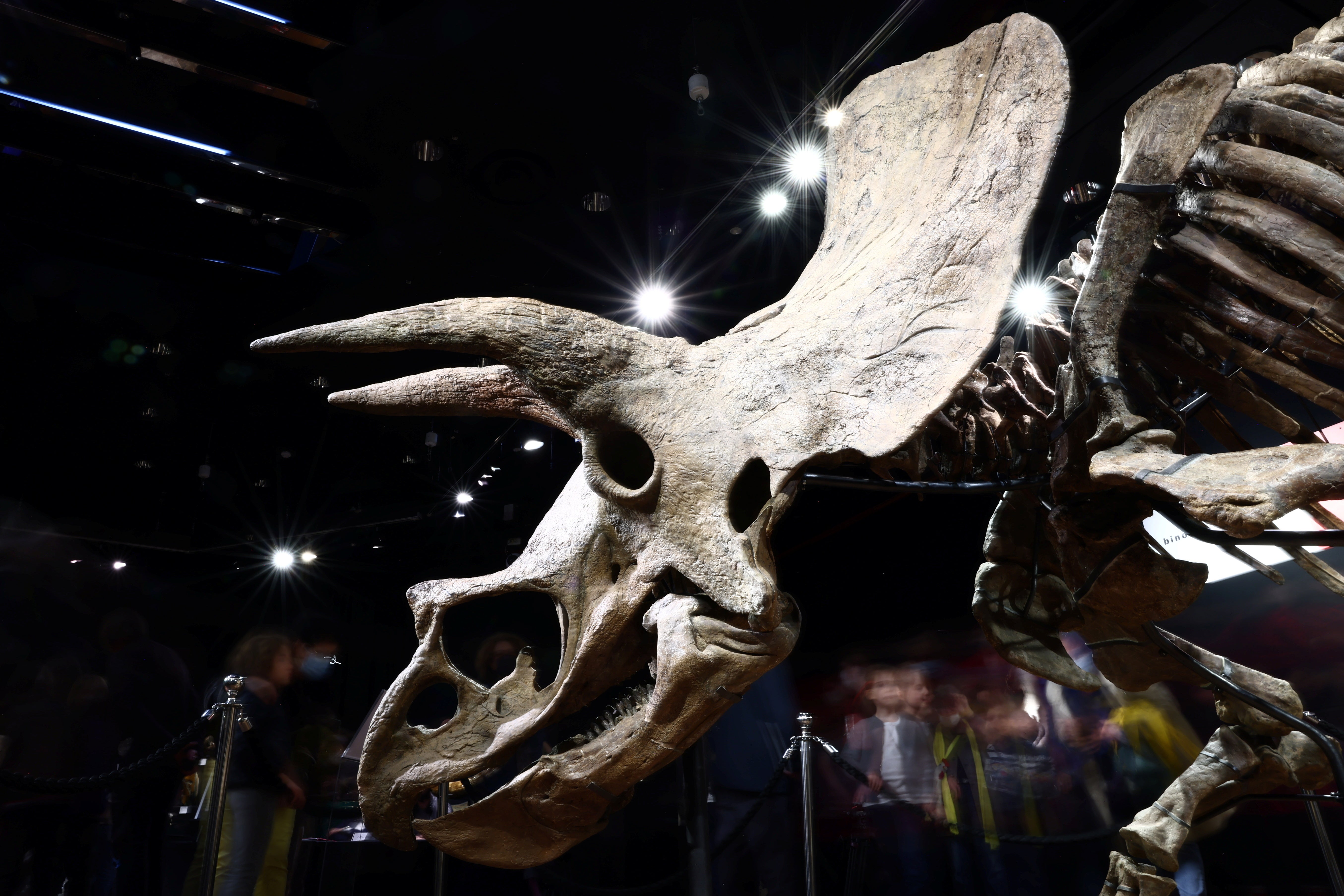
A 23-foot-long fossilised skeleton of a majestic triceratops has fetched an incredible $7.7mn (£5.5mn) in an auction in Paris.
The dinosaur, named “Big John” after the owner of the land where the bones were found, were sold by the Hôtel Drouot auction house on Thursday.
Big John will now be coming back home, as the dinosaur was unearthed in modern-day US and was sold to an unnamed buyer from the country.
The sale price surpassed expectations as the auction house had estimated Big John would fetch them between $1.4mn (£1mn) and $1.7mn (£1.3mn).
“It’s a record for Europe,” Alexandre Giquello, the auctioneer and president of the Drouot Group, told Reuters.
The sale confirmed “the growing interest of connoisseurs in this category,” he said, according to a press release issued by the auction house.

“It reveals a market that is now structured and favours exceptional pieces and impeccable provenance,” he added.
“It’s being acquired by an American collector, and that individual is absolutely thrilled with the idea of being able to bring a piece like this to his personal use,” Djuan Rivers, a representative for the buyer, told Reuters.
Big John is a prominent, 7.15 metre-long (23 foot-long) specimen. Its fossilised remains comprise 200 bones and are said to be a rare and significant achievement in curation.
Its imposing structure also gave it an entry into the Guinness World Records as the largest known triceratops skeleton.
Nearly 60 per cent of the entire dinosaur was unearthed at the site of what used to be an ancient flood plain and is now modern-day South Dakota in the US.
Its skull, 2.6m long and 2m wide, makes it stand out from other specimens. Big John’s assembled skull is 75 per cent of its entirety.
The two largest horns of the triceratops, which stands for “three-horned face”, are 1.1m long and are 30 centimetres wide. This would have made it able to withstand 16 tons of pressure.

The triceratops, however, bears the mark of a traumatic lesion, which could have happened as a result of a fight with another dinosaur.
Big John lived in Laramidia, an island continent that stretched from present-day Alaska to Mexico, nearly 66 million years ago.
“He died in an ancient flood plain – the current Hell Creek geological formation (South Dakota, United States) – allowing the conservation of his skeleton in mud, a sediment devoid of any biological activity,” said the press release.
Big John’s bones were discovered by geologist Walter W Stein Bill in May 2014 and the excavation was finished by August 2015.
Big John was then flown to the Zoic workshop, famous for assembling prehistoric fossils, in Trieste, Italy
“The history behind this and the curation of it is absolutely impressive, so to be able to be a part of preserving something of this nature that was actually found in the US, in South Dakota, is also something extremely special,” Mr Rivers said.







